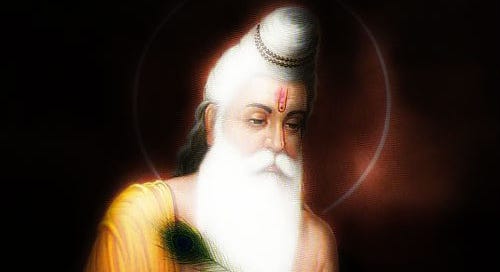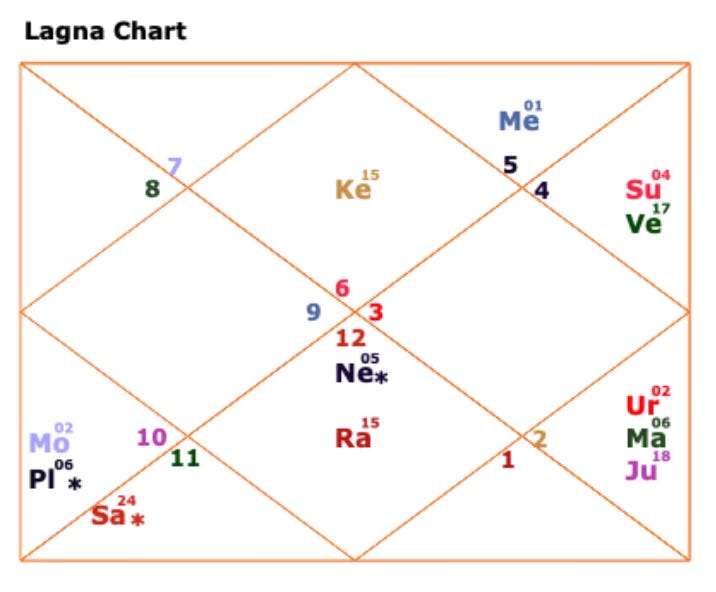Namaste Family, welcome back to Agama’s Message by Agama Shakti. This week's edition will focus on the profound essence of the Guru, and why this Guru Poornima holds special significance for me.
In Vedic Dharma, the Guru embodies an essence greater than that of a god. Unlike a teacher, who imparts knowledge, a Guru guides you to experience the very nectar of existence.
Experience > Knowledge
gururbrahma gururvisnuh gururdevo mahesvarah
guruh saksat parabrahma tasmai Sri grave namah
The guru is Brahma, the guru is Visnu, the guru is Mahesvara (Siva),
the guru is the self-revealing limitless Brahman. Salutations to that revered guru.
Why is Guru Poornima Celebrated?
In Vedic tradition, there are twelve full moons (Poornimas) in a year, each associated with a specific month and often linked with particular deities or events. Here are the names of all 12 Poornimas:
Chaitra Poornima: Occurs in the month of Chaitra (March-April). Known for Hanuman Jayanti in some regions.
Vaishakha Poornima: Occurs in the month of Vaishakha (April-May). It is also celebrated as Buddha Poornima, commemorating the birth, enlightenment, and death of Gautama Buddha.
Jyeshtha Poornima: Occurs in the month of Jyeshtha (May-June). Also celebrated as Vat Poornima in some regions.
Ashadha Poornima: Occurs in the month of Ashadha (June-July). Known as Guru Poornima, it honors spiritual teachers and gurus.
Shravana Poornima: Occurs in the month of Shravana (July-August). Celebrated as Raksha Bandhan in many parts of India.
Bhadrapada Poornima: Occurs in the month of Bhadrapada (August-September). Also known as Anant Chaturdashi in some regions.
Ashwin Poornima: Occurs in the month of Ashwin (September-October). Known as Sharad Poornima or Kojagiri Poornima.
Kartika Poornima: Occurs in the month of Kartika (October-November). Celebrated as Dev Diwali and also known for the Kartika Snana.
Margashirsha Poornima: Occurs in the month of Margashirsha (November-December). Celebrated as Dattatreya Jayanti.
Pausha Poornima: Occurs in the month of Pausha (December-January). Known for rituals and bathing in holy rivers.
Magha Poornima: Occurs in the month of Magha (January-February). Associated with Magha Snana, a holy bath in sacred rivers.
Phalguna Poornima: Occurs in the month of Phalguna (February-March). Celebrated as Holi, the festival of colors.
Each full moon is considered special due to the unique placement of the Moon and the Sun. Let me explain this with Guru Poornima as an example. On Guru Poornima, the Sun is in the sign of Cancer, and the Moon is in the opposite sign of Capricorn, creating a 7th aspect relationship. Guru Poornima is celebrated as the birthday of Ved Vyasa, the author of the Mahabharata and its important excerpts, the Bhagavad Gita and Vishnu Sahasranama.
It is crucial to note the Sun's placement in the delicate sign of Cancer, which represents the nurturing qualities of a mother. Meanwhile, the Moon, positioned in Capricorn, aspects the Sun, bringing the discipline and strictness of Saturn (Shani). This alignment symbolizes how a true Guru embodies the loving and caring nature of a mother, along with the discipline of a father and the strictness of Saturn.
Why this Guru Poornima is important to me?
I have a very special placement of Jupiter in my chart; it is the most powerful planet in my kundali and a guiding force for my decisions. This Guru Poornima, I am initiating myself into a sadhana practice that will be life-transforming and much-needed. While I can't share too many details, after much delay, a Guru has finally decided to take me under their guidance.
How to select a guru?
Be very careful when selecting a Guru. A Guru can be in either a physical or non-physical form. Once you choose a Guru, it is essential to remain faithful and devoted, as only a Guru has the ability to help you see beyond the materialistic world. A Guru can manifest as a saying, a name, or the teachings of a saint.
I have had many Gurus in my life: Osho, Ramana Maharshi, Gajanan Maharaj, Swami Samartha Maharaj, Trilanga Swami, Ramakrishna Paramahamsa, Swami Vivekananda, and Krishna himself. I can assure you that they are still present and ready to help you; you just need to be ready to receive their guidance.
Recognizing a physical Guru happens when you feel as vulnerable and trusting as an infant or a toddler in their presence. You should trust them deeply, seeing beyond their human form. A Guru guides by correcting your mistakes, supporting your journey, and offering guidance when necessary. Your trust in them should resemble a child's faith when tossed into the air by a father, believing they will be safely caught.
The Guru's teachings should address both your psychological and spiritual needs, evoking a profound sense of calm comparable to sitting under a banyan tree in their presence.
Just be careful before you select a physical guru.
Closing Remarks
May this Guru Poornima illuminate your path with the light and warmth of a Guru, bringing new beginnings and abundant knowledge. Feel free to contact me at agamashakti@gmail.com. Thank you for reading; please share this message with your family and friends.
Yours, Vishal Rajput❤️







